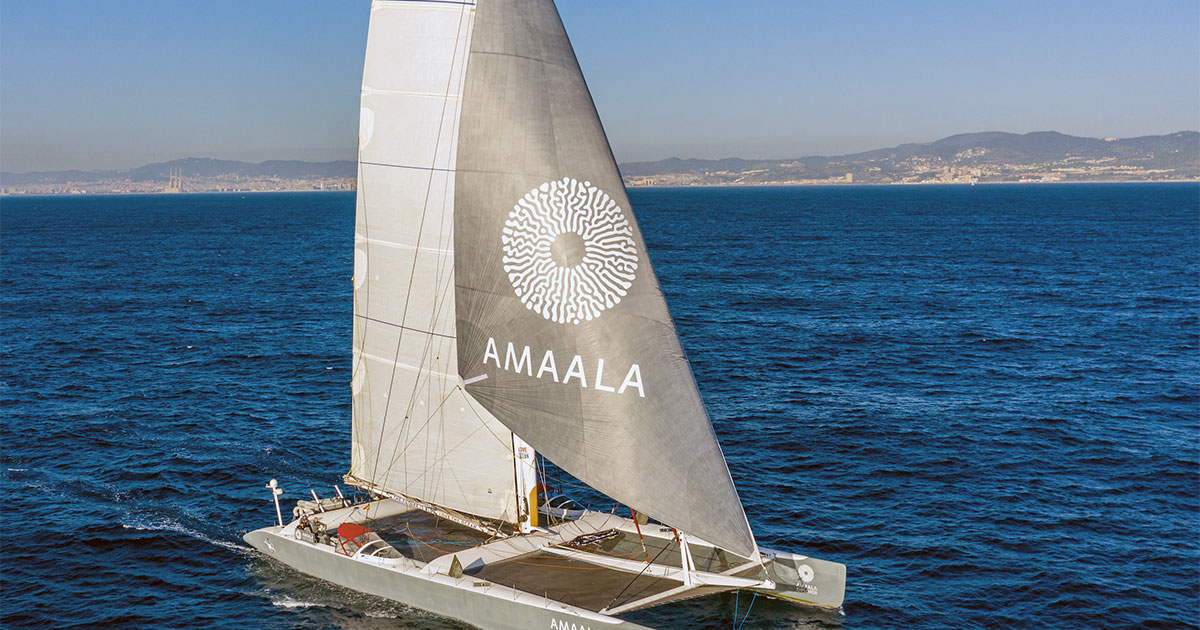It was in Monaco in September 2019 when I first met Yvan and Cecile Griboval, the driving force behind OceanoScientific, an ocean science NGO based in France and Monaco. Yvan and Cecile are passionate about improving humanity’s relationship with the sea, through voyages of scientific discovery, and are using these to share and promote a love of the ocean.
At the time, I was in Monaco renewing AMAALA’s partnership with several of the world’s leading marine research and oceanographic organizations that are focused on finding solutions to some of the major marine challenges that we face today.
AMAALA is a new tourism giga-project located on Saudi Arabia’s north-west coast, fronting onto an undeveloped and stunningly beautiful 80-kilometer stretch of the Red Sea. Along with sister developments along the north-west Red Sea coast, AMAALA is a model for a new global vision of sustainable and regenerative tourism.

(Image credit: AMAALA)
While we are now the custodians of predominantly untouched Red Sea coral reefs and marine habitats, these areas are under rapidly increasing stress. The Red Sea is connected to the north with the Mediterranean Sea, and to the south with the Indian Ocean. This means that problems in one can potentially become problems in the others, especially through man’s interactions. Shared problems call for shared solutions.
Yvan and Cecile proposed an OceanoScientific-AMAALA partnership on a planned scientific voyage around the western Mediterranean, focused on understanding the type and extent of contaminants that wash from some of the major European rivers into the Mediterranean and the impact these have upon the sea and the marine ecology. The voyage was to be a zero-carbon expedition in a specially outfitted sailing yacht, using bespoke, engineered-onboard, scientific equipment that Yvan had perfected during earlier sailing expeditions, including a solo circumnavigation below the great southern Capes - a journey of adventure and a tough test of man, yacht, and scientific equipment.
The purpose of the expedition was clear: we at AMAALA were cementing our commitment to not only focus on marine conservation but also marine enhancement (improving the environment by our being there). The expedition added another feather to our cap – our planning, delivery, and operation were once again being uniquely informed and led by science. Our alignment with OceanoScientific marked the natural next-step in our journey to become a zero-carbon tourism destination, to deliver zero waste, and to welcome international travelers to a strong yachting component.
At 3pm on 15 October 2020, the mooring lines for the expedition were cast off by HSH Sovereign Prince Albert II of Monaco - a little more than a year ago today as I am writing this. The AMAALA EXPLORER set off on a 1,500 nautical mile (2,800 kilometer) journey, with ports of call in Porto Cervo, Barcelona, and La-Seyne-Sur-Mer, before returning to Monaco Yacht Club two-weeks later on 29 October at 11am. It was again greeted by Prince Albert II, as well as cheering crowds of yacht clubs, schools, ocean environment foundations, and media who had all gathered to hear about how we all have a role to play in re-balancing our relationship with the sea and finding solutions to our marine challenges.
Along the route, water and sediment samples were collected at the mouths of three major western European rivers draining into the Mediterranean: the Tiber River downstream of Rome in Italy; the Ebro River south of Barcelona in Spain, and the Rhone River south-west of Marseilles in France. All collected samples were delivered to Ifremer, the renowned French marine science institute and the expedition’s science partner.
The analysis showed that there are significant amounts of human-made toxic contamination finding its way down the big rivers, with the probability that some of this contamination is finding its way into the marine food chain. These findings proceeded over the year following the voyage, resulting in the publication of the first of several scientific articles.
As this is the first of a series of ongoing contaminant voyages planned by OceanoScientific, future results will show which way the trend is progressing. Are national, local, business, and our personal efforts to reverse our unwanted environmental impacts on the sea making a difference? Will this be in time to avoid the worst of the impacts?
AMAALA, too, is planning to be involved in future ocean expeditions – this time, closer to home. Much like the 2020 expedition, future explorations will be aligned with our vision for a sustainable ocean, advancing marine science. The outcomes will continue to inform our decisions. After all, AMAALA is derived from the Arabic word for “Hope”.
This feature appeared in Environment, Coastal & Offshore (ECO) Magazine's 2021 Winter edition, to read more access the magazine here.





